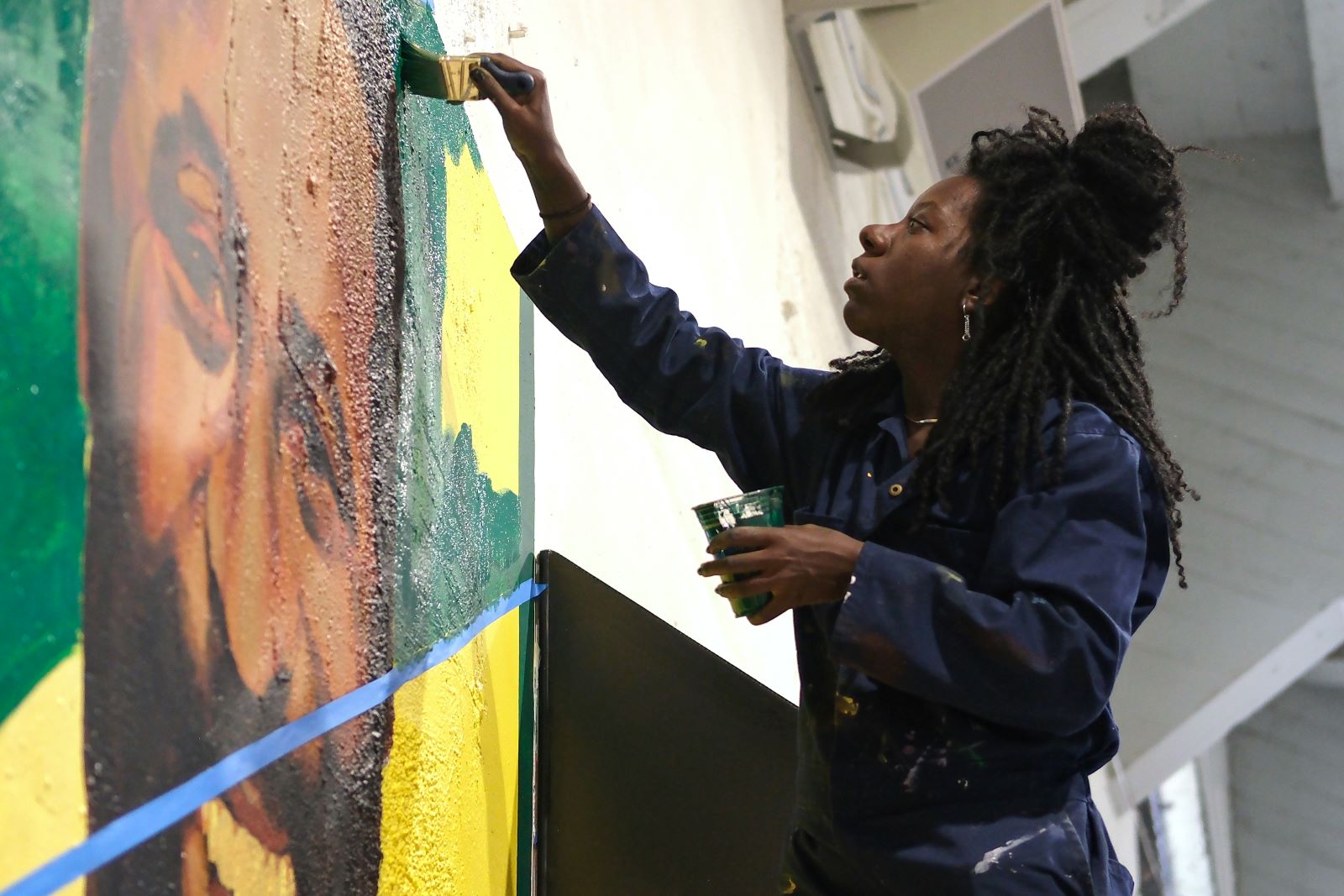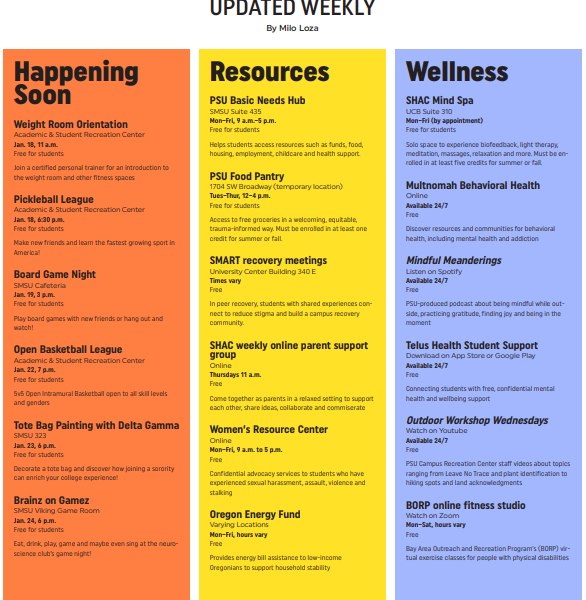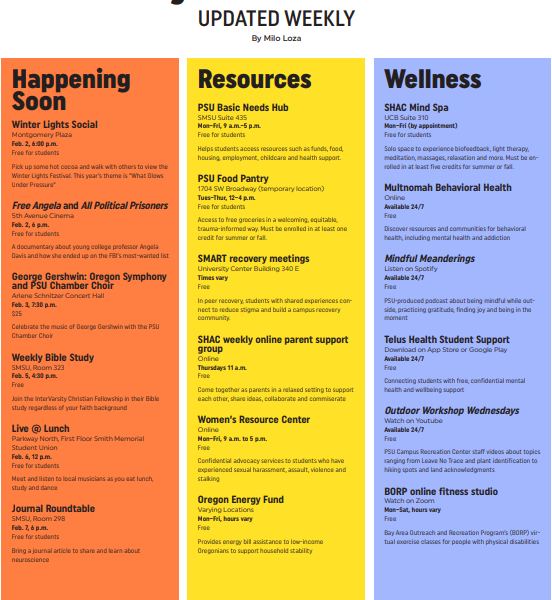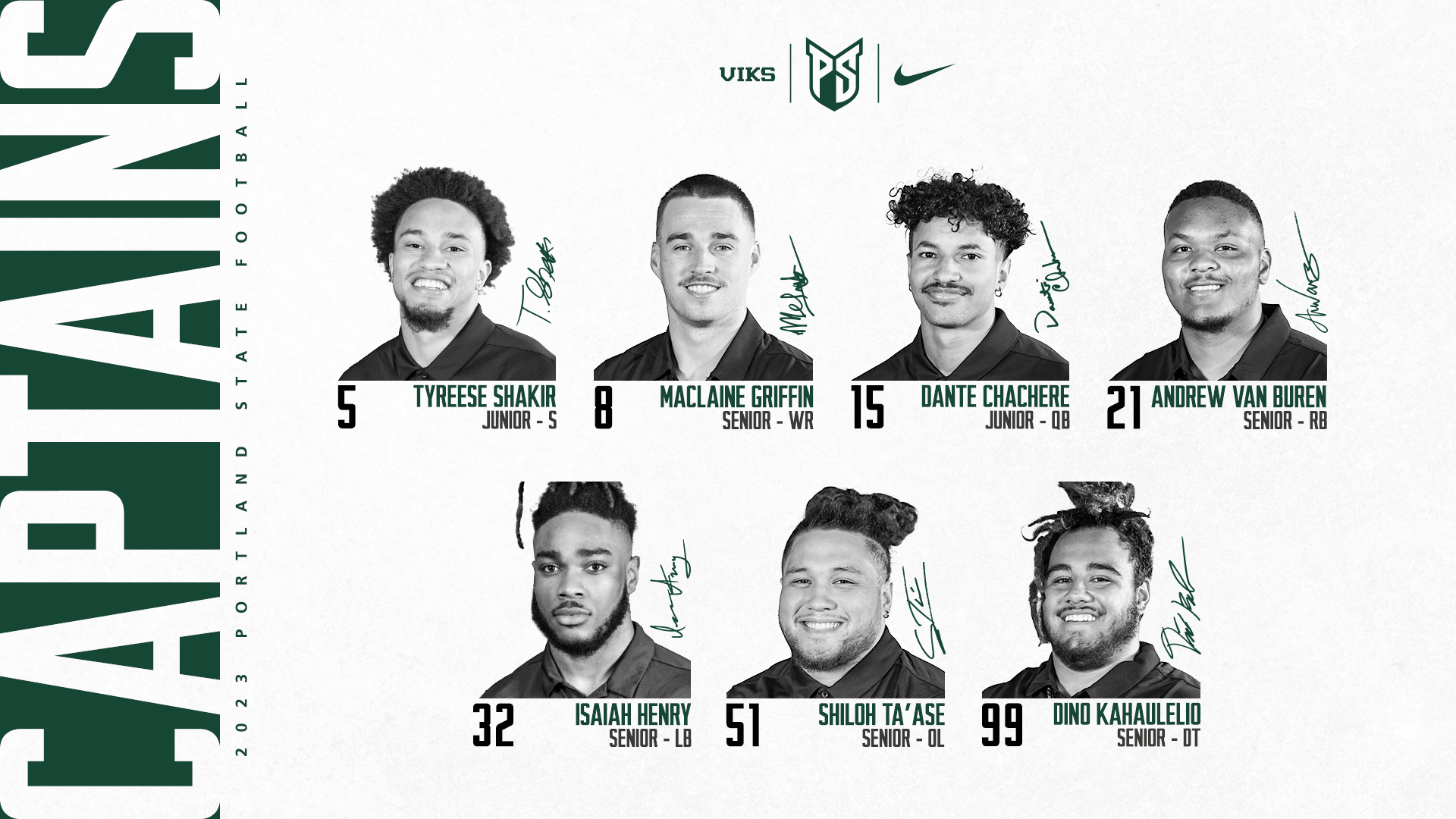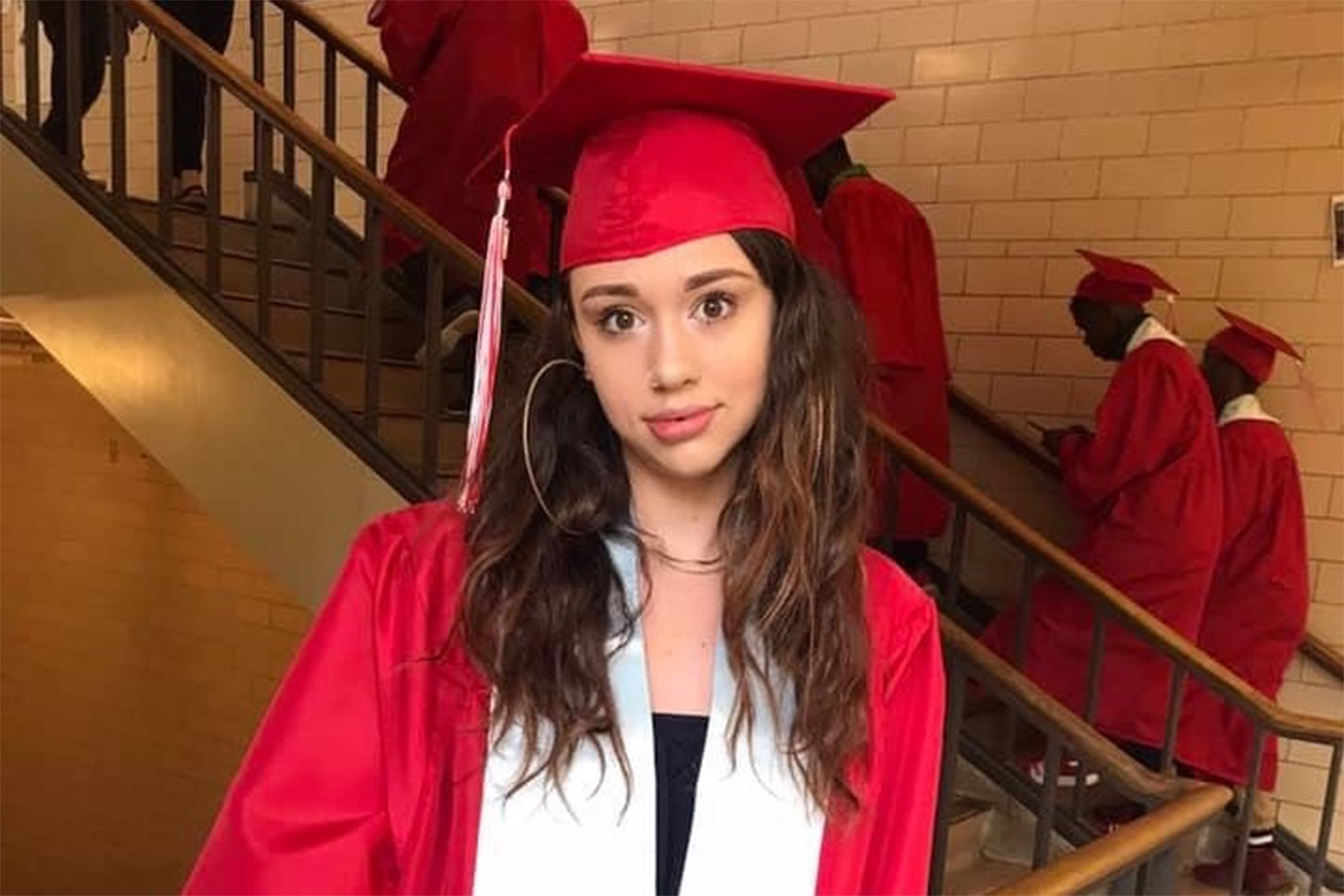The work of artist Kyra Watkins can be seen throughout Portland, such as in the North Park Blocks, where the project Never Look Away marks the first mural to celebrate LGBTQ+ pioneers in Oregon; at Morrison Place in SE Portland, where the Ladies Up Mural Project celebrates local, female-identifying artists; and at Providence Park, where Watkins created a larger-than-life mural in honor of soccer athlete Clyde Best.
Born and raised in Cincinnati, Ohio, Watkins is Portland State’s 2023–2024 artist-in-residence. Her latest work is currently underway in the second-floor study lounge of SMSU. This will be a memorial piece for Jason Washington, who was shot and killed by PSU campus police in 2018.
Portland State Vanguard spoke with Watkins to learn more about her background and art practice.
Vanguard: When or how did you realize that art was your passion?
Watkins: I think all kids from a very young age, toddlers and up, gravitate to the arts, whether it’s singing, dancing, [or] drawing. So I think that element—that inspiration or that creativity—was always there. But when I knew that I was going places was when I drew my very first self-portrait at the age of 13. And I still have it to this day. When I saw that self-portrait, I was like, ‘This is it! This is the piece…’
Seeing that piece, I was like, ‘Okay, I have the skill set for art. Let me stick to it.’ And it’s funny, because I look back on that piece and I don’t think it was very flattering, but it was enough to inspire me to keep going. That was the baton that was handed to me, and I ran with it ever since.
VG: What does your art practice look like today?
Watkins: Aside from when I’m not doing portrait work in my own personal practice, I also do a lot of public art. And that stems from my very first apprenticeship being making murals. And when I’m doing large-scale work, it doesn’t necessarily have to be figurative. It’s whatever the client wants.
I think the community has really embraced me. And a lot of the work I get is from just building community with other artists and having a firm group of other artists really behind me, and that’s just moving our work together.
I just completed a portrait to memorialize a soccer player, Clyde Best. That’s housed at Providence Park. I’m very proud of that. I got that commission through the Portland [Street Art] Alliance.
VG: Can you tell me about your work on the Jason Washington memorial?
Watkins: I am very excited about this project. I understand the importance of it to memorialize Jason Washington and his story so that his story isn’t forgotten.
I think when it comes to atonement, it’s important that we constantly remind ourselves where we went wrong so that we never go wrong again. So I think this piece will speak to that, but more importantly, highlight who Jason Washington was as a person, which I think is very important because he’s just more than just his last minutes or his final moments.
He is more than that and I want to highlight that, but hopefully it can also stand to be a reminder of where we failed him and never fail someone like that again.
I’m in a very privileged position. A lot of times people come to me wanting to memorialize their loved ones—whether they’ve passed on or not. And I feel, as an artist, I’m a historian.
VG: How does your personal practice differ from your commissioned works?
Watkins: When I’m dissecting what people commission me to do, I’m just retelling their stories and I try not to put my own spin on it. And sometimes it has its emotional baggage. I care very deeply about the projects that I do for other people, but when it comes to my personal work, that’s where my heart is.
VG: Can you tell me about your creative process in your personal work? What’s the inspiration behind the subject matter?
Watkins: Children are usually the main source or subject of my work, but when people see my work I hope that they see themselves. And it’s a reminder to show up for your inner child every single day.
And that’s what I like to depict in my work. The iconography may be children, but we were all once children. And a lot of what we do, children will be greatly impacted by it at the end of the day, unfortunately, when they really don’t have much control over the circumstances that are going on in the world.
And I don’t know, that really just speaks to me. Ever since growing up, I never really had parents that were really well-adjusted to being parents. And fortunately, I had a community around me that was able to pick up the slack.
But not a lot of children have that. And when I became an adult, instead of constantly telling myself, ‘Man, I wish as a child that I had parents that could do more,’ I just had to be that adult for myself. So every day my mission is to show up for little Kyra every chance I get.
And I hope when people see my work, it’s a reminder not only for them to show up for their inner child, but [that] we have to do better for the children that are coming up behind us.
A lot of my children have tattoos on them. I was thinking… how can I make a situation where I am speaking to our adolescence, but my audience is still an adult audience and I want to marry the two. I’m like, ‘What do most adults have that’s not lewd, and it’s not disrespectful to children?’
So I definitely superimpose tattoos onto my children. And I’ve had friends who have been kind enough to send me their baby pictures, and I tend to put on tattoos that they now have in adulthood, cause I have this belief that we carry our inner child through with us throughout the remainder of our lives. And that’s what I’m really paying homage to.
My methodology, a lot of times, is layering colors. I use a method called the grisaille method. So I start with a monochromatic painting—or either it’s black or white or a sepia tone—and then I slowly add values on top of it, and that’s what gives it the effect that it has, or the presentation that it has.
VG: Do you have any goals for your future as an artist?
Watkins: I think that having programming available to me at a young age is what saved my life. So my goal is to start an art camp—a public art camp for youth around high school age—where we can make public art. We’ll probably make it offsite and have it installed at a later date around our community.
I think one thing it’ll do is give our youth something to do during the summer, and then it’s great to attach to your CV. When I was a young girl—15, 16, 17—I could walk around my community and say, ‘Hey, I put that there. I put that piece of work there.’ I want to create that experience for youth here in Portland. I think that’s one of my greatest aspirations.
VG: Do you have any advice for young artists?
Watkins: Collaborate. I think a lot of people try to network up. My number one advice is to network across. Network with your classmates. Network with your friends and collaborate. I would say that’s number one.
Probably one would be show up. Show up on time. The best ability is availability. I can’t tell you how many times there are people who are more talented than me, but they were not as consistent or willing to show up as I have been.
And speaking of consistency, be consistent. Create all the time. You have to learn how to create when you don’t feel like creating. Set aside time daily. If you’re not currently in a paid practice, you have to practice daily, even when you’re not inspired.
And then practice something that you’re not good at…
Continue to do the work even when you don’t feel like it. That’s my advice.
And be a pleasure. No one wants to be with a grump. Be a pleasure, not a pushover, but a pleasure.
Be kind. It costs nothing.

